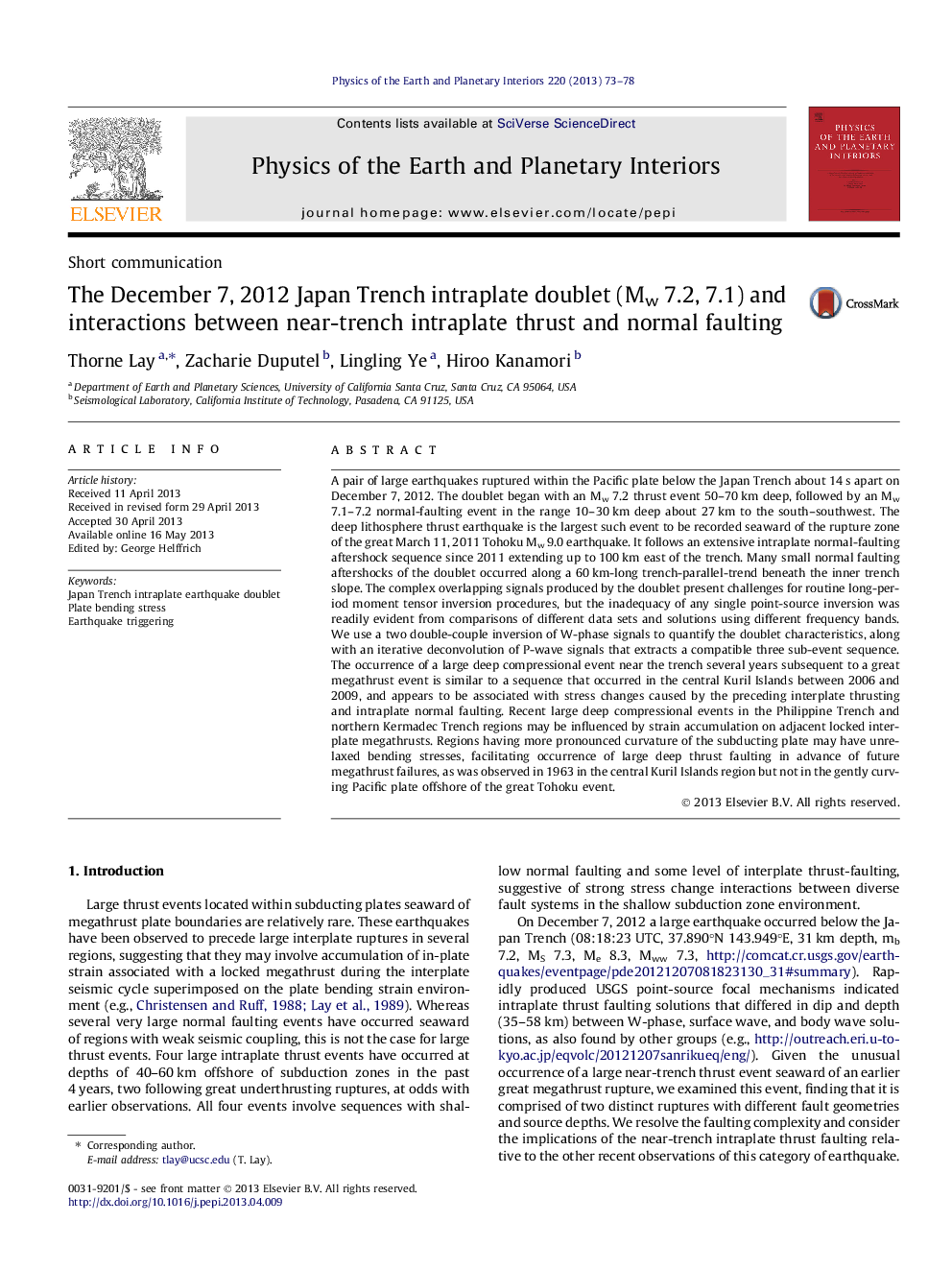| Article ID | Journal | Published Year | Pages | File Type |
|---|---|---|---|---|
| 4741555 | Physics of the Earth and Planetary Interiors | 2013 | 6 Pages |
•The December 7, 2012 Japan Trench earthquake was an intraplate doublet.•The doublet involved a thrust sub-event followed by a normal fault sub-event.•The complex faulting is resolved by multiple sub-event waveform inversions.•The deep thrust event is a rare type of faulting attributed to earlier events.•Other recent large deep intraplate thrusting below trenches is discussed.
A pair of large earthquakes ruptured within the Pacific plate below the Japan Trench about 14 s apart on December 7, 2012. The doublet began with an Mw 7.2 thrust event 50–70 km deep, followed by an Mw 7.1–7.2 normal-faulting event in the range 10–30 km deep about 27 km to the south–southwest. The deep lithosphere thrust earthquake is the largest such event to be recorded seaward of the rupture zone of the great March 11, 2011 Tohoku Mw 9.0 earthquake. It follows an extensive intraplate normal-faulting aftershock sequence since 2011 extending up to 100 km east of the trench. Many small normal faulting aftershocks of the doublet occurred along a 60 km-long trench-parallel-trend beneath the inner trench slope. The complex overlapping signals produced by the doublet present challenges for routine long-period moment tensor inversion procedures, but the inadequacy of any single point-source inversion was readily evident from comparisons of different data sets and solutions using different frequency bands. We use a two double-couple inversion of W-phase signals to quantify the doublet characteristics, along with an iterative deconvolution of P-wave signals that extracts a compatible three sub-event sequence. The occurrence of a large deep compressional event near the trench several years subsequent to a great megathrust event is similar to a sequence that occurred in the central Kuril Islands between 2006 and 2009, and appears to be associated with stress changes caused by the preceding interplate thrusting and intraplate normal faulting. Recent large deep compressional events in the Philippine Trench and northern Kermadec Trench regions may be influenced by strain accumulation on adjacent locked interplate megathrusts. Regions having more pronounced curvature of the subducting plate may have unrelaxed bending stresses, facilitating occurrence of large deep thrust faulting in advance of future megathrust failures, as was observed in 1963 in the central Kuril Islands region but not in the gently curving Pacific plate offshore of the great Tohoku event.
